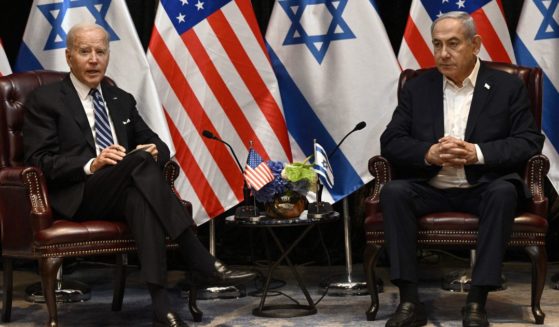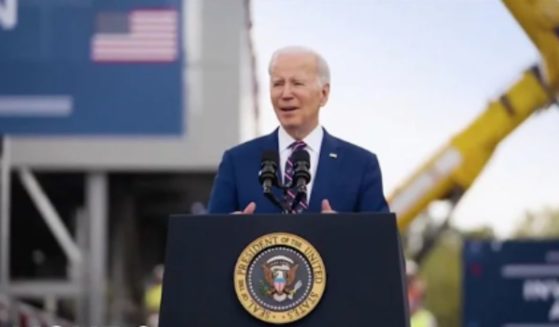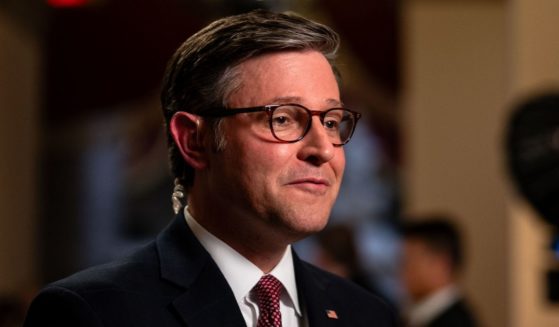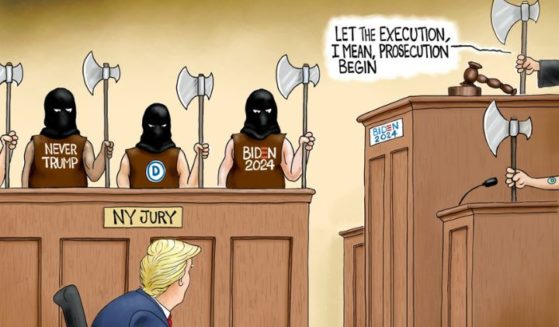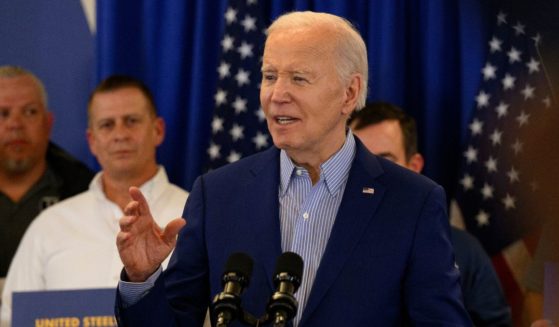China's 'Debt Trap Diplomacy' Casts Long, Dark Shadow on the International Order
China’s Belt and Road Initiative is shaping up to be one of the most ambitious global infrastructure projects ever devised.
The multitrillion-dollar plan, which was announced by Chinese President Xi Jinping in 2013, has caught the attention of countries around the world.
For some nations, however, Beijing’s prodigally sized project has generated an unnerving, as well as inquisitive, sentiment.
As of right now, the West has courted no counter to the initiative. Nevertheless, in March, President Joe Biden went as far as to express an interest in cultivating an infrastructure scheme among democratic countries that would challenge the Belt and Road Initiative.
“I suggested we should have, essentially, a similar initiative, pulling from the democratic states, helping those communities around the world that, in fact, need help,” Biden told reporters, according to Reuters.
But such a supplication may be ill-advised, for Beijing’s BRI is much more than a simple international infrastructure plan.
“They want to establish another system to counter the existing world order established after World War II by the United States with their allies,” Heng He, a commentator on Sound of Hope Radio and Focus Talk, said in an interview with The Western Journal.
“This is the way to … export [the] revolution. But they don’t call [it] the revolution anymore, they call it the China model.”
What Is One Belt, One Road?
Based on the original Silk Road — which emerged as the backbone of international trade roughly 2,000 years ago — the Belt and Road Initiative originally consisted of two parts: the Silk Road Economic Belt and Maritime Silk Road, referred to in their combined form as the One Belt, One Road Initiative.
Beijing has both geopolitical and economic interests in proliferating the project.
The plan originally professed to spur trade and economic growth among countries in East and South Asia as a means to “draw our peoples closer,” Xi said in a 2014 address to the Association of Southeast Asian Nations.
Since then, the project has grown in scope and size.
Using low interest loans from the Chinese-based Asian Infrastructure Bank — known as the Silk Road Fund — Xi is expected to spend upward of $8 trillion in investment over the course of the project’s lifespan, according to a state media summary.
Now, countries in Europe, Africa, South and Latin America and the Caribbean are bound to BRI under an immense network of infrastructure projects, including railways, dams, nuclear power plants, natural gas pipelines, ports and highways, which promote the use of China’s currency, the Renminbi, and expand Beijing’s geopolitical influence, according to the Council on Foreign Relations.
BRI’s influence now spreads across every continent and includes countries that account for more than two-thirds of the world’s population.
As of January, according to the Central University of Finance and Economics in Beijing, 140 countries have joined the Belt and Road Initiative.
While BRI has been framed to attract nations in the Global South, the project has notably procured membership from 34 countries in Europe and Central Asia — 18 of which are in the European Union.
And Beijing has used the initiative to build mutual connections with countries located on critical geopolitical fault lines, including Russia, Myanmar and Pakistan.
What Does This Mean for the West?
Meanwhile, some Western governments fear that the initiative is a Trojan horse by which China will expand its international influence.
International criticism has fixated on how China attracts Belt and Road Initiative member-states and how their membership status affects the countries over the long term.
Analysts and public officials view China’s BRI application as an attempt to lure countries in “debt trap diplomacy.”
Brahma Chellaney, a professor at the Centre of Policy Research in New Delhi, said Belt and Road Initiative investment “is not inherently bad” for lower-income countries, but in most cases, it “leaves them vulnerable to China’s influence.”
Similar views were shared last year by members of former President Donald Trump’s State Department.
China’s debt trap diplomacy often binds countries to Beijing’s international vision. In most cases, Chinese officials offer large sums of investment to a country’s powerful elites, who accept the loans to modernize their nation’s infrastructure. Yet the loans are often accompanied by stipulations that require the project to use Chinese construction materials or partner with Chinese companies.
According to the Trump State Department, several countries in Africa, Latin and South America and South Asia have even defaulted on project-related payments, strengthening China’s control over their internal infrastructure and economy. In Sri Lanka, the government lost control over a major port after failing to pay a Chinese government loan.
This method allows China to leverage its economic and political power, molding the international order to an image more favorable to the Communist Party’s ambitions, in addition to challenging the West’s role in spurring international trade and investment.
“The party today wields its economic power to co-opt and coerce countries around the world; make the societies and politics of foreign nations more accommodating to CCP specifications; and reshape international organizations in line with China’s brand of socialism,” the Trump-era report said.
The Biden administration has employed a triangular approach to challenging leadership in Beijing — an adversarial, competitive and cooperative relationship.
Contrary to the administration’s anti-Trump foreign policy rhetoric, however, Biden has mostly co-opted his predecessor’s sentiment toward China.
The United States has shifted its geopolitical focus from the Middle East to the Indo-Pacific, culminating in plans for a symbolic withdrawal of U.S. military forces from Afghanistan after two decades of war. This shift, which materialized in the American political consciousness during the Trump era, has led to a more tenacious Chinese policy.
Washington has deepened its resolve to protect international competition and peace through the traditional means by which countries have historically pursued — but the administration continues to view the Chinese government as a geopolitical threat.
Truth and Accuracy
We are committed to truth and accuracy in all of our journalism. Read our editorial standards.




